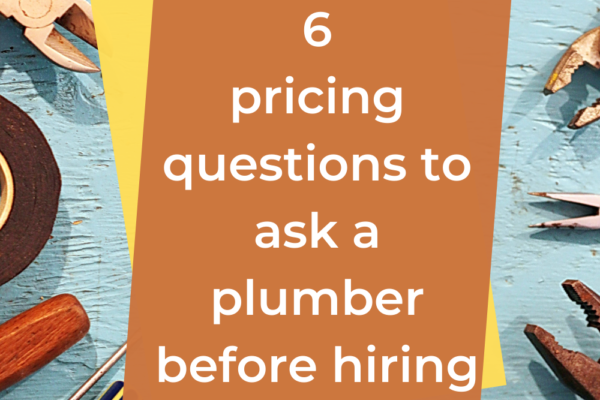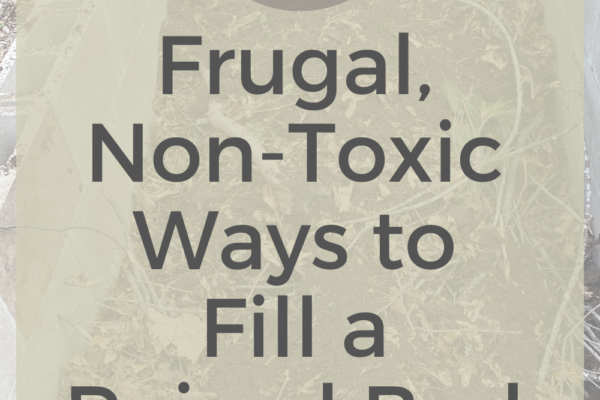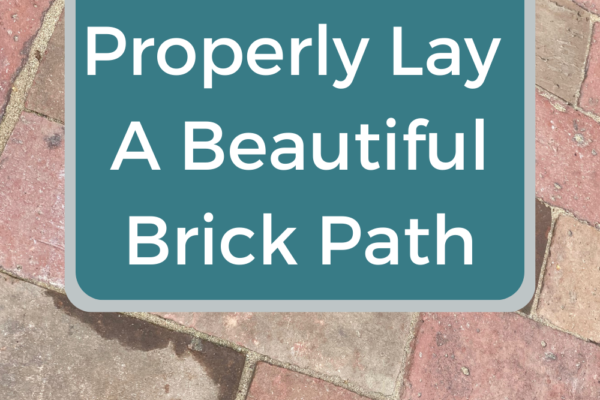Is there anything in the whole world more beautiful than a buzzing garden alive with buds and bees and butterflies? It’s a tough sight to beat, for sure. Especially when you know that that little happy space is working hard to simultaneously clean water, feed pollinators, and keep rainwater away from your home. That’s why rain gardens are easily one of our favorite projects.
We built our first rain garden several years ago at our first home. We came home from a weekend away as new homeowners to a drenched basement. There had been a big storm. A large amount of rain had fallen in a very short amount of time and when we returned home, the carpet in our basement went SQUISH.
After doing all we could to dry it out, we configured a plan to prevent it from happening again.
What had happened?
The previous spring, we’d done some landscaping. We did everything we thought we were supposed to do:
We cleaned the gutters and downspouts and they were flowing freely into the yard. The pavers we used were pervious. Our yard visibly sloped away from our house.
However, the rain during this storm came down so rapidly that the gutters had overflowed. The pervious pavers weren’t meant for this volume of water and it became trapped in the landscaping which overflowed into our covered window wells.
It was a mess. A preventable mess.

What is a rain garden?
A rain garden is a recessed space in your yard to which water is directed from a drain pipe. During a rainstorm, water from a home’s gutters typically runs into the yard and then to the street. With a rain garden, the water comes out of the downspout, goes into a drain in the ground (called a catch basin) then flows through a pipe leading to the rain garden.
Rain gardens are typically filled with a variety of native plants. The plants not only create a beautiful aesthetic, but also have a very valuable, ecological function.
How are rain gardens good for the environment?
Groundwater
During a rainstorm, water goes from your downspout, through your yard, and into the storm sewer, which then drains back into the waterways. This water can pick up litter, fertilizers, road salts, etc. polluting your local bodies of water and making your lakes green and unswimmable. By redirecting this water to a rain garden, the water is filtered through the plants’ roots and soils and a larger percentage – now cleaned – enters the water table.
Plants
The plants cultivated in a rain gardens are largely native perennial and biennial species that encourage pollinator populations (bees, butterflies, hummingbirds). These plants provide plenty of food and habitat for these species.
[Read about this new, green trend in yards to further help the pollinator population!]
What kind of plants do you plant in rain gardens?
Check with your local agricultural extension or garden store for ideas as to what will work best in your area, but here are some plants that will generally succeed in a rain garden.
Milkweeds
Milkweeds are known for their ability to attract butterflies. There are a variety of species in various heights and colors. They’re all beautiful and produce those silk-filled seed pods kids love to pull apart. Check out some orange butterfly weed, purple ironweed, and pink swamp milkweed.
Coneflowers/Daisies
Purple coneflowers, black-eyed Susans, and daisies come in a variety of heights and can all add a happy pop to your rain garden!
Herbs
Members of the mint family, chamomile, and dill can all be great edible additions to a rain garden. We’ve also had much success with anise, which makes an awesome tea!
Worts
Figwort, motherwort, spiderwort, St. John’s wort…. There are a variety of colors, heights, and styles for all tastes.
Asters and Lobelias
Another couple of fresh, friendly flowers for our flying friends!
[Photo, Lobelia cardinalis (cardinal flowers). This was its first season of flowers.]
How do I build a rain garden?
First of all, be sure to pick a location for your garden that’s at least 10 feet from your home. In the event of heavy rains, the garden will fill and possibly overflow, so it’s best to keep it a safe distance from your house and foundation.
Secondly, examine your soil. A rain garden needs to drain, so be sure your space isn’t clay. If you have any questions about the soil or project’s viability, check with your local agricultural extension to learn more.
Dig
You’ll have to do quite a bit of digging for a rain garden.
To have a proper rain garden, you’ll need to create a passageway from your downspout to the garden. To do this, you’ll need to dig a trench from your downspout to the rain garden, being mindful that it continually slopes downward, even if only slightly. A long level will work just fine to monitor this as you go.
In your trench, you’ll install a catch basin and drain pipe to carry the water to the rain garden. The investment on this is pretty small and could save you thousands if you risk flooding in your home.
In the case of our landscaping story above, we created a Y with our drain pipe. We placed catch basins both at the bottom of the downspout and another in a low point in our landscaping between the window wells where the water came in.
Of course, you’ll also need to dig the rain garden itself. How deep your rain garden goes is a combination of two factors — aesthetics and slope.
A rain garden really only needs to be deep enough to ensure that the piping continually slopes and drains into the garden, but it’s recommended that they’re 1’-2’ deep and in a location where water is naturally draining. Make it any shape or size you like!
Plant
Shopping for native plants is so fun! However, if they’re something you’re not familiar with, it can make designing a little overwhelming. There are so many heights, colors, leaf shapes, and pollinators to attract when considering which plants to choose. Here are a couple of tips:
- Be mindful to choose plants that do well in moist soils. Rain gardens are meant to be soggy places!
- Mind your sun levels. You can put a rain garden in sun or shade, just make sure the flowers’ needs match..
- Be aware of how tall your plants can grow. Some native plants can grow really tall! Put your tallest plants at the deepest parts of your garden.
- Buy a variety with different flowering time frames to keep the space visually appealing all spring, summer, and fall.
A Budget-Friendly Project
If you don’t want to spend much on flowers, no worries! A few plants will do. Perennials can take a few years to mature and, what may start as a small bit of greenery can consume much of your garden’s real estate a few years down the line. You may even find yourself overwhelmed by the number of plants you have when they reseed themselves.
We had one anise plant in our first rain garden; by year three we had eight, so we transplanted a few. The following year, we had hundreds and a buzzing hub under our pines.
Final Step: Enjoy!
It’s lots of fun to watch a rain garden mature and to become familiar with the critters that visit it. (Don’t be surprised if you see a frog or two!) If you end up with too many plants over time, you can always rehome them. It’s a great way to encourage someone else to start on their own rain garden journey.
Do you have a rain garden or do you have any questions? If so, share them in the comments below.
Happy growing!
— The Joneses Four





4 thoughts on “How to Beautifully Keep Rainwater Away from Your Home”